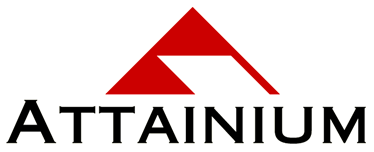Attainium Corp. tested the mettle of participants at the North American Commercial Real Estate Congress in Toronto during a hands-on session - "The Disaster Experience" - that challenged their ability to respond to emergencies, disasters, unexpected events, and business interruptions. Presented by BOMA International, in conjunction with BOMA Canada, the annual conference brought together representatives of BOMA's nearly 100 US and Canadian affiliate members, who collectively own or manage more than nine million square feet of office space or about 80 percent of the total office space in North America.
"Disaster preparedness is absolutely critical for commercial real estate owners and managers," said Lorie Damon, Director of Education for BOMA (Building Owners and Managers Association) International, "and we felt this was a terrific opportunity to help our members test their response readiness. Attainium has presented similar programs for BOMA locals, all of whom felt the seminars were of great value, so we decided to make this experience part of our annual conference."
According to Damon, the majority of the 100 or so participants found the scenarios pretty realistic and true to the kinds of disasters and disruptions that real estate professionals handle. "The simulation seems very real, and everyone was exhausted at the end. It truly tests participants' abilities.
Just about every facility has a complete disaster response plan," Damon said, "and people have copies of the document. But, in reality, no one memorizes the manual and, when the simulation (or the disaster) starts, the manual goes out the window. Then you have to figure out how to deal with what's really going on. Communication and coordination among the parties really get tested."
David Snelgrove, manager, contracted services, for the Canadian National Services Group/GWL Realty Advisors, found real value in going through the scenario. "Our group's strength was that we had a lot of very experienced people who were familiar with what to do. When you're really in a crisis like that," he said, "you most likely wouldn't have that quality of experience."
Snelgrove, whose company manages 16 million square feet of commercial office space, including a significant number of trophy buildings, said that the main benefit of the training for him was the "whole concept of having to be prepared for anything… to run scenarios by people and ask 'how should we handle this?' You have to think through the risk and not discount anything; saying 'that would never happen' is the worst kind of blindness."
"Two of the most critical components of successful disaster preparedness," said Bob Mellinger, Attainium CEO, "are thorough risk assessment and exercising the plan. As part of the exercise, we discuss how to go about identifying all possible risks and prioritizing them; if you skip this part, you won't know what to prepare for! As we saw on 9/11, anything is possible… and you have to be prepared to react to whatever happens.
"The exercise itself is geared toward helping participants see how different implementing the plan is from simply having the plan," Mellinger said. "You never want your first use of the plan to be in an actual emergency… you need to test it thoroughly so you know it will work. That's been the most successful aspect of The Disaster Experience to date, according to participants - the learning involved in bringing the paper plan to life."
# # #

